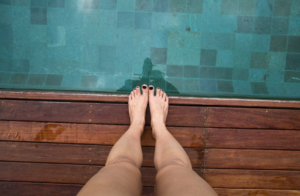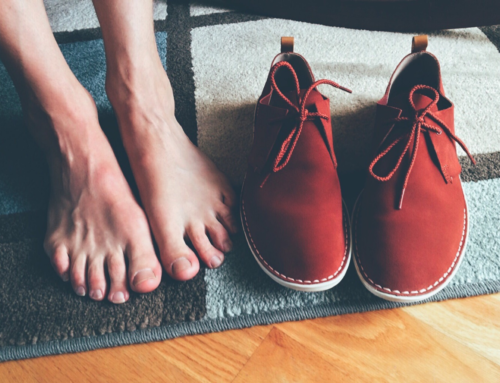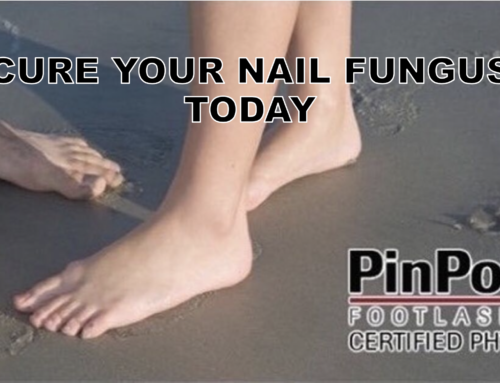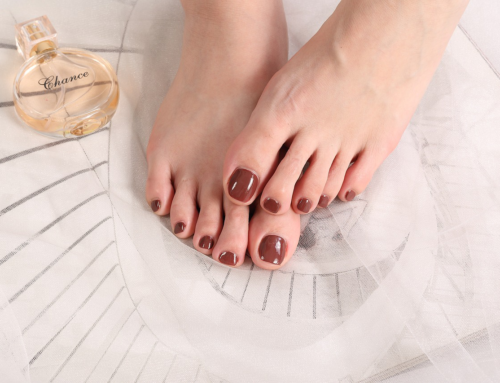There are many risks to bleaching toenail fungus at home. It can be tempting to try out since toenail fungus is often associated with being unclean. However, there are serious risks to putting bleach on any part of your body. It is necessary to understand these risks before attempting to bleach toenail fungus at home. It is important to understand the risks associated with any sort of treatment. As a result, at-home treatments can be especially risky since they aren’t performed under the guidance of a medical professional. It is in environments like this, isolated from proper medical advice, that truly dangerous treatments can be attempted. This is one of these very dangerous treatments.
Bleach Treatment
The fungal infection can sometimes be perceived as “dirty”. It makes sense that some people would think bleach would be a good option to “clean” it. Sometimes, even online blogs and articles may recommend this dangerous treatment. Usually, these are not written by people with any medical training. It is important to understand the risks of any treatment you attempt. Especially if it is done at home and involves chemicals like bleach. Using bleach on your toes and skin is like a bad idea once you understand the harm it can do. As well as the lack of benefits that the chemical has for toenail fungus.
Bleaching is not effective as a topical treatment for fungus for different reasons. The most important thing is that cleaning products like bleach are actually designed to be as harsh as possible. This is necessary when using them for cleaning. However, the skin of humans is not designed as such and is more susceptible to the dangers of bleach. Any type of contact with bleach risks bad damage to the skin. It is not worth the attempt. Symptoms from using bleach on the skin include irritation, redness, and pain. Also, chemical burns can cause blistering and even permanent damage to the skin.
Bleaching Toenails
Bleaching toenail fungus is risky because there is no way to ensure the bleach only contacts the toenail fungus spores. If you bleach your toenails, you are sure to get bleach on your skin or nail in the process. This can and likely will cause damage to your toes. This is because of the strength of bleach as a chemical.
Cleaning products of this nature need to be strong in order to work as a cleaning agent. As a result, it is not possible to also design them to be safe for human contact. This is why the bottle of bleach comes with a warning label on it. On this label, they explain the safe ways to handle bleach as well as the unsafe ways that bleach can be handled. It is extremely important to follow the label instructions as closely as possible to avoid serious damage to your body. These label instructions and warnings are based on evidence that bleach can cause damage to bodily tissues.
Bleaching toenail fungus can cause something called a chemical burn. This is a condition that happens when the skin comes into contact with powerful, destructive chemicals like bleach. Chemical burns result in the skin becoming red, irritated, and swollen. In severe cases of chemical burns, the chemical can even get into the bloodstream and cause systemic issues. Whether or not the chemical becomes systemic, the treatment of chemical burns is still a medical emergency. This means that the burn must be addressed by a medical professional as soon as possible. When left untreated, chemical burns can cause even more serious problems than they would when they are treated immediately.

Damaging Toenails with Bleach
Damage from bleaching toenail fungus will vary in intensity based on a few different factors. For one, the amount of time that the bleach is left on the skin is very important in determining how much damage will be caused. This is why it’s necessary to immediately wash off any bleach that gets on your skin, no matter how small the amount is. Damage from bleach will also increase in intensity with the concentration of bleach that was used. Stronger, more potent bleach will cause more damage than diluted bleach. However, any bleach that comes into contact with the skin has the potential to cause harm.
Bleaching toenail fungus can cause damage that needs to be treated by a medical professional. To determine if you need to be seen by a doctor, you need to assess the damage that has been done to your skin and toe. If you only have mild irritation of the skin and all of the bleach has been removed, you likely don’t need to be seen by a doctor immediately. In this situation, you can simply monitor the condition and make sure that it starts to improve quickly.
If you have a more serious condition that looks like a chemical burn, for example, you notice that your skin is very red or is in a lot of pain, you need to be seen by a doctor immediately. Even if the pain is bearable, bleach can cause a lot of damage, and healing from the bleach needs to be monitored by a medical professional.
Dangerous Toenail Fungus Treatment
If you have tried bleaching any part of your skin, you are likely experiencing pain, irritation, and burning. You must take quick steps to prevent any further damage from occurring. You need to immediately remove any clothing with the bleach so that it won’t continue to harm you.
This will prevent residual bleach in the fabric from causing further damage without you realizing it is. After this, an equally important step is to rinse off the bleach with lukewarm or cool water. Hot water can actually make the irritation and inflammation worse. So you should avoid that and use cool or room temperature water instead. You can use an unscented soap on the area afterward to scrub away residual bleach.
After bleaching your nails
To determine the level of damage done from bleaching your nails, you should first examine how the skin looks. Your skin might only have a mild chemical burn if you are lucky and rinse off the bleach quickly. However, chemical burns almost always require immediate medical attention. If you only notice mild redness without any pain, you can wait a day or so to see if the condition improves. You can apply temporary remedies like cool compresses and ointments to the burn, which may help alleviate the more uncomfortable symptoms.
If your chemical burn presents as anything more than mild redness, you also need to be seen by a doctor immediately, as this could lead to severe complications and side effects down the line if untreated.
Consequences of bleaching your nails
When bleach isn’t used as the label recommends, serious consequences can follow. The pH balance of the skin and body is one of the most important systems that can be disrupted. The human body’s natural pH is naturally close to neutral. While bleach is at the highest end of the pH scale. This makes it very basic, and when it comes into contact with the skin, it will severely disrupt the skin’s pH balance. Delicate human skin can’t handle the harshness of bleach. Bleach application can lead to damage that may be severe.
Bleaching your nails will cause damage that varies in its intensity depending on a few factors. The most important of which may be the length of bleach application. Awareness and utilization of protective measures can be helpful in avoiding chemical burns. These measures specifically state to avoid contact with the skin. The longer the bleach stays on the skin surface, the worse the chemical burn. Increasing concentrations of bleach will cause damage to the nail at increasingly rapid rates as well. If the bleach is undiluted, it will cause the most severe damage the fastest. If bleach of any concentration comes into contact with your skin, immediately rinse off the affected area for at least 5 minutes with running water.
What to do when bleaching goes wrong
If you have accidentally ingested bleach or have gotten it in your eyes, this is considered a medical emergency. You need to call 911 immediately if this has happened. This is because bleach can cause extremely dangerous side effects when inside the body. Do not attempt to wait to call 911 or find an at-home remedy for ingesting bleach. It is not worth it.
Aside from bleaching and ineffective topical and oral medications, there are definitely other options available to treat toenail fungus. If you are infected with toenail fungus, seek out an FDA-approved treatment that is given by a nail doctor. The treatments available for toenail fungus are limited, and many of them are ineffective.
Toenail Fungus Treatments
While bleaching toenail fungus is a bad idea, there are other treatment options available for toenail fungus that are more effective and safe. However, not all of these treatments are made equal. Topical treatments for fungus are actually very weak as well, and will take a year or longer to see any results if they come at all. Oral antifungal medications are a little more effective than topicals, but these medications come with the risk of severe side effects like liver toxicity.
The best option to treat toenail fungus is the PinPointe laser, which typically requires only one treatment to eliminate the fungus. This is the best laser, as compared to other options on the market, which require 4 or more treatments to eliminate the fungus. It is also completely safe, with no risk of major side effects like oral medication. To learn more about the PinPointe laser, visit our website or call (800) 672-0625 to schedule a free consultation.




